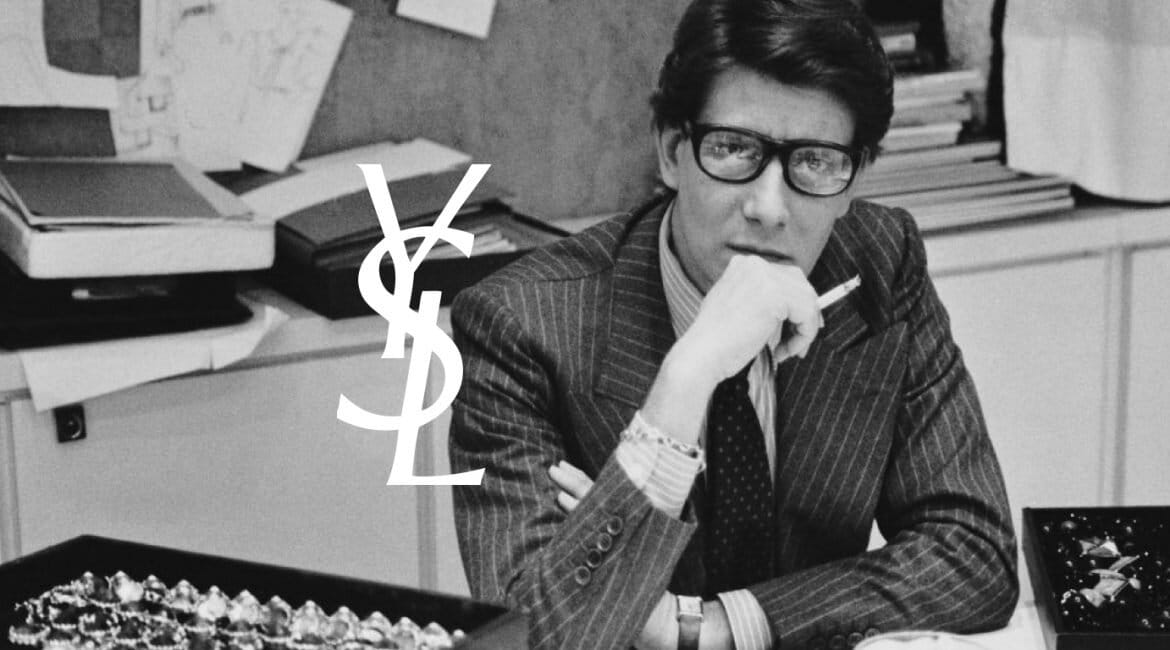Yves Saint Laurent, often abbreviated as YSL, was born on August 1, 1936, in Oran, Algeria. From a young age, Saint Laurent exhibited a profound interest in art and fashion, creating intricate paper dolls and detailed sketches that reflected his burgeoning talent. His passion for fashion was nurtured within the confines of a supportive family, leading him to pursue his dreams despite the societal norms of the time.
Saint Laurent’s formal education in fashion began at the Chambre Syndicale de la Haute Couture in Paris, an institution renowned for producing some of the most influential designers in the industry. His remarkable skill and intellectual prowess quickly set him apart from his peers. This intellectual approach to fashion design, characterized by a deep understanding of both aesthetic principles and practical execution, became a hallmark of his work.
Early influences on Saint Laurent’s career were diverse and impactful. The works of Christian Dior, in particular, left a lasting impression on him. At the tender age of 17, Saint Laurent moved to Paris and, with a stroke of fortune, was introduced to Dior himself. This meeting marked the beginning of a pivotal mentor-mentee relationship. Saint Laurent’s tenure at the House of Dior not only honed his design skills but also imbued him with a sense of discipline and innovation that would later define his own brand.
Another significant influence was Saint Laurent’s immersion in the rich cultural tapestry of Paris. The city’s vibrant art scene, intellectual discussions, and avant-garde movements provided a fertile ground for his creativity. This period of his life was essential in shaping his vision and philosophy, ultimately leading to groundbreaking contributions to the world of fashion and couture.

Early Career and First Steps in Fashion
Yves Saint Laurent’s early career in fashion began with a promising start, marked by his entry into the prestigious world of haute couture under the tutelage of Christian Dior. In 1955, at the tender age of 19, Saint Laurent joined the House of Dior, where he quickly distinguished himself as a prodigious talent. His keen eye for design and his intellectual approach to fashion allowed him to stand out in an industry that revered innovation and artistic expression.
The young designer’s rapid ascent within the fashion house was nothing short of remarkable. By 1957, after just two years, Christian Dior himself anointed Saint Laurent as his successor, recognizing the extraordinary potential and creative vision that the young designer possessed. This transition was precipitated by Dior’s untimely death later that same year, thrusting Saint Laurent into the limelight as the head designer at the age of 21. This appointment made him the youngest couturier in the history of haute couture, a testament to his exceptional skill and the trust placed in his abilities.
Saint Laurent’s debut collection for Dior, the “Trapeze” line, was unveiled in 1958 and received with critical acclaim. The collection showcased his innovative approach to silhouette, emphasizing comfort and fluidity over the rigid structures that had previously dominated the fashion world. This pivotal moment not only solidified his reputation as a formidable designer but also marked the beginning of a revolutionary journey through fashion and couture.
Throughout his tenure at Dior, Saint Laurent continued to impress with his intellectual and avant-garde designs. His work was characterized by a blend of elegance and modernity, which resonated deeply with the fashion-forward clientele of the time. Key collections, such as the 1960 “Beat Look,” further demonstrated his ability to anticipate and set trends, ultimately paving the way for his own eponymous fashion house.
Yves Saint Laurent’s early career serves as a profound example of how a young designer’s vision and talent can revolutionize an industry. His initial steps in fashion laid a robust foundation for what would become an illustrious and influential career, forever altering the landscape of haute couture.

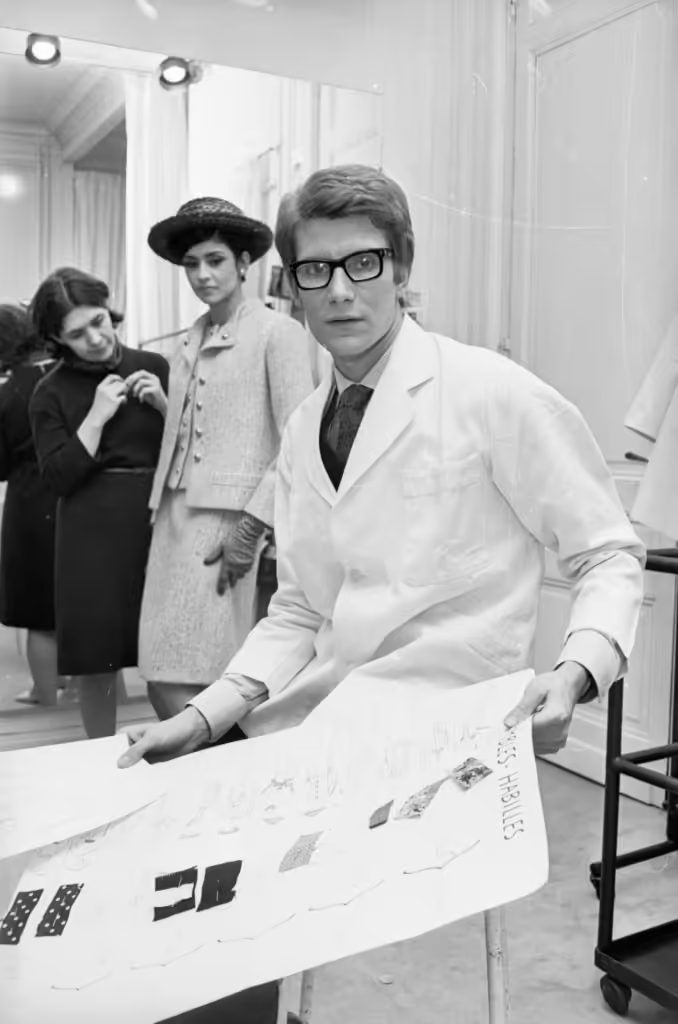


Establishment of Yves Saint Laurent’s Own House
Yves Saint Laurent, an intellectual and visionary in the world of fashion, embarked on a defining journey when he established his own fashion house in 1961. This pivotal moment came to fruition with the indispensable support of his lifelong partner, Pierre Bergé. Their collaboration was not merely a professional alliance but a powerful symbiosis that balanced creative genius with strategic acumen.
Founding the Yves Saint Laurent brand was a task marked by both formidable challenges and remarkable triumphs. Yves Saint Laurent, having previously worked under the tutelage of Christian Dior, faced the daunting task of breaking away from an established legacy to carve out his own identity. Financial constraints, industry skepticism, and the pressure of expectations loomed large. However, Yves Saint Laurent’s unwavering commitment to innovation and Pierre Bergé’s astute business sense steered them through these initial hurdles.
One of the early triumphs of the Yves Saint Laurent brand was the introduction of the “Trapeze Dress” in 1958, which was celebrated for its revolutionary A-line silhouette. This design not only garnered critical acclaim but also set a precedent for the brand’s future collections. Yves Saint Laurent’s affinity for blending traditional aesthetics with avant-garde elements became a hallmark, defining the brand’s unique ethos. His “Le Smoking” jacket, introduced in 1966, further exemplified this innovative spirit by challenging the conventional norms of women’s fashion and cementing his reputation as a trailblazer.
The initial years of the Yves Saint Laurent house were also characterized by an unwavering dedication to craftsmanship and quality. Each collection was meticulously curated to reflect Yves Saint Laurent’s profound understanding of fashion as an art form. His approach resonated deeply within the industry, attracting a clientele that appreciated the intellectual rigor and aesthetic sophistication of his work.
In conclusion, the establishment of Yves Saint Laurent’s own house was not merely the birth of a brand but the genesis of a fashion revolution. The synergy between Yves Saint Laurent’s visionary creativity and Pierre Bergé’s strategic prowess laid a robust foundation for what would become one of the most iconic names in couture. Through challenges and triumphs, the early years of Yves Saint Laurent were a testament to the enduring power of innovation and intellectual artistry in fashion.
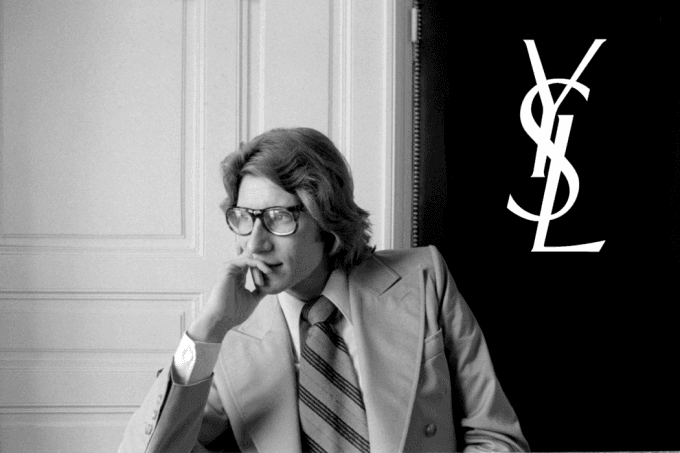
Innovations and Groundbreaking Designs
Yves Saint Laurent was a visionary whose innovative designs have had a transformative impact on fashion. Among his most iconic creations, the ‘Le Smoking’ tuxedo for women stands as a revolutionary moment in fashion history. Introduced in 1966, ‘Le Smoking’ challenged traditional gender norms by incorporating elements of masculine tailoring into women’s fashion. This design not only empowered women but also redefined the boundaries of elegance and sophistication, making a bold intellectual statement. The tuxedo became a symbol of female liberation and strength, resonating deeply in the realms of both fashion and culture.
Equally groundbreaking was the Mondrian dress, which premiered in the fall of 1965. Inspired by the abstract paintings of Dutch artist Piet Mondrian, this dress exemplified Yves Saint Laurent’s ability to merge art with fashion. The design featured a simple A-line silhouette with bold, geometric color-blocking, creating a visual essay on the harmony between form and function. The Mondrian dress broke away from the intricate, often frivolous designs of the past, offering a minimalist yet striking aesthetic that set a new trend in the fashion world.
Yves Saint Laurent also pioneered the use of non-traditional fabrics and materials, further distinguishing his brand from conventional couture. His innovative use of transparent silk, leather, and even vinyl in his designs was not only daring but also intellectually stimulating. These materials added new textures and layers to the garments, offering a fresh perspective on what fashion could be. This willingness to experiment with new fabrics and styles allowed Yves Saint Laurent to continually push the boundaries of fashion, setting trends that would influence designers for generations to come.
Through these groundbreaking designs, Yves Saint Laurent did more than just create beautiful clothes; he crafted a narrative that challenged societal norms and celebrated individuality. His work remains a testament to the power of innovation in fashion, inspiring future generations to think differently and push the boundaries of creativity.
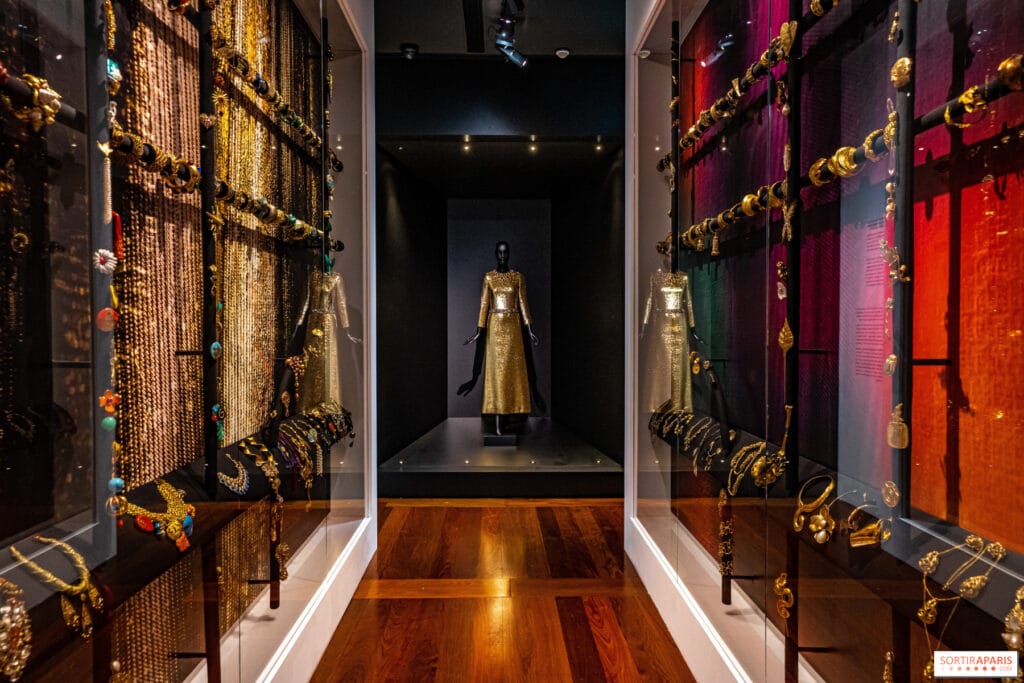
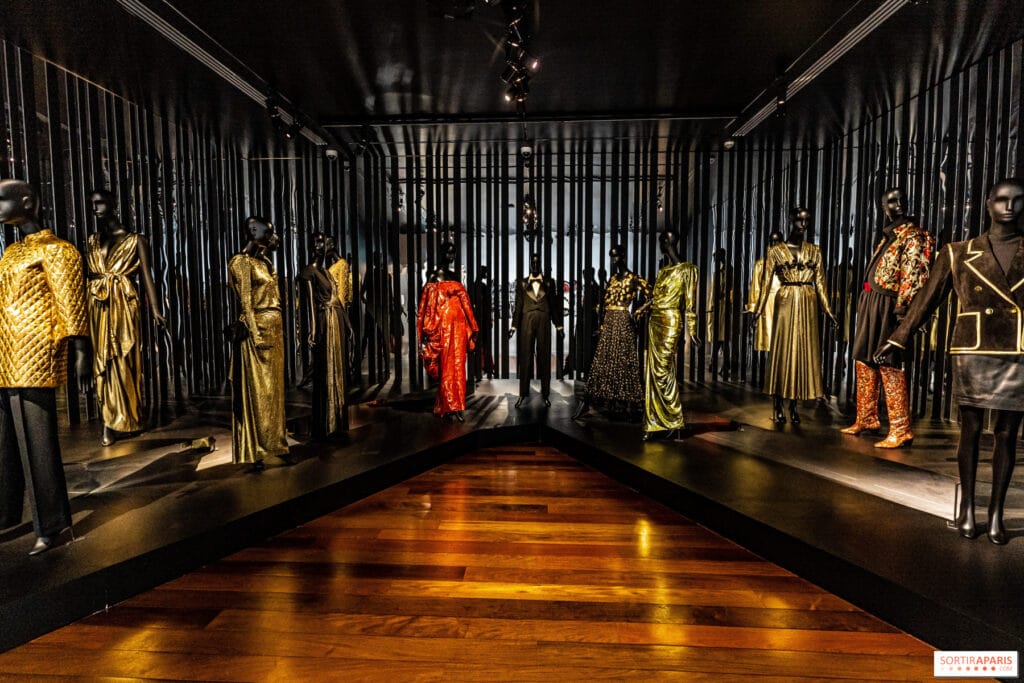


Impact on Women’s Fashion and Empowerment
Yves Saint Laurent’s innovative approach to fashion was instrumental in transforming women’s wardrobes and, by extension, their roles in society. His designs transcended mere aesthetics, offering women newfound freedom, confidence, and a modern identity. One of the most iconic contributions was the introduction of the “Le Smoking” tuxedo in 1966. This groundbreaking piece challenged traditional gender norms by presenting women with a powerful, androgynous option that spoke to both equality and elegance. It was a statement of empowerment, allowing women to embrace their intellectual prowess and assert their presence in traditionally male-dominated spheres.
Another significant milestone was the creation of the “Rive Gauche” ready-to-wear line in 1966. This collection democratized fashion, making high-quality, avant-garde designs accessible to a broader audience. The ready-to-wear line provided women with stylish, yet practical options that catered to their dynamic lifestyles, further solidifying Saint Laurent’s role as a catalyst for change. His 1971 “Liberation” collection, inspired by 1940s fashion, was both controversial and celebrated for its boldness. By drawing on a time of hardship and resilience, Saint Laurent highlighted the strength and adaptability of women, encouraging them to embrace their individuality and personal histories.
Throughout his career, Yves Saint Laurent consistently leveraged his platform to challenge societal norms and empower women. His designs played a pivotal role in redefining femininity, blending elements of power and grace in a manner that resonated deeply with the evolving zeitgeist. The intellectual underpinning of his work provided an essay in fashion, each collection a chapter that advanced the narrative of women’s liberation. His influence extended beyond the runway, permeating the broader cultural consciousness and reinforcing the notion that fashion is not just about clothes, but also about identity and transformation.

Collaborations and Cultural Influence
Yves Saint Laurent’s career was marked not only by his groundbreaking designs but also by his extensive collaborations with other creative fields, which further cemented his legacy as a revolutionary figure in fashion and beyond. One of his most notable collaborations was with the theater, where he designed costumes for various productions that showcased his flair for dramatic and sophisticated fashion. His costumes for plays such as “Cyrano de Bergerac” and “Don Quixote” were acclaimed for their elegant and innovative designs, demonstrating his ability to blend fashion with performance art seamlessly.
In the realm of film, Saint Laurent contributed significantly to the visual storytelling of cinema. His collaboration with celebrated director Luis Buñuel on the film “Belle de Jour” is particularly noteworthy. The film’s protagonist, portrayed by Catherine Deneuve, wore Saint Laurent’s impeccably tailored outfits, which became iconic and influenced fashion trends of the era. The intellectual approach Saint Laurent took in designing these costumes showcased his understanding of character development through fashion, effectively bridging the gap between film and haute couture.
Beyond theater and film, Saint Laurent’s influence extended into the world of art. He was deeply inspired by various art movements and frequently drew upon these influences in his collections. His “Mondrian” collection, inspired by the works of Dutch painter Piet Mondrian, is a prime example of how he integrated visual art into fashion. This collection featured dresses with bold, geometric patterns reminiscent of Mondrian’s abstract compositions, reflecting Saint Laurent’s innovative spirit and his ability to transform art into wearable masterpieces.
Saint Laurent’s work transcended the confines of the fashion industry, impacting broader cultural trends and movements. His designs not only shaped the way people dressed but also reflected and influenced societal changes. For instance, his introduction of the tuxedo suit for women challenged traditional gender norms and became a symbol of empowerment and liberation for women. This intellectual approach to fashion design – where clothing becomes a statement of cultural and social commentary – highlights Saint Laurent’s enduring influence on modern culture.



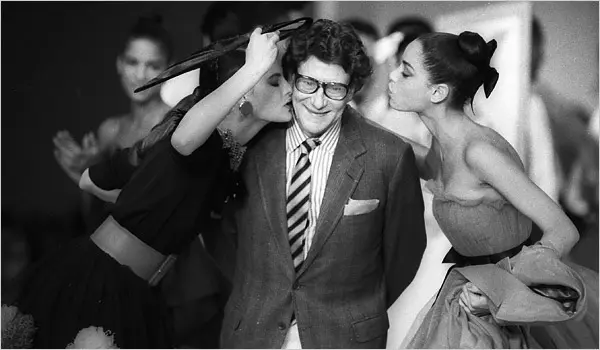

Legacy and Lasting Influence
Yves Saint Laurent’s legacy, since his passing, has been nothing short of enduring and transformative. His eponymous brand continues to thrive, perpetuating the revolutionary spirit he infused into fashion and couture. Posthumously, Saint Laurent’s designs remain iconic, preserved meticulously by museums and fashion houses alike. These designs not only highlight his profound understanding of the art of haute couture but also serve as a testament to his intellectual approach to fashion, where each piece was an essay in creativity and elegance.
The brand’s evolution can be attributed to the stewardship of creative directors who have honored Saint Laurent’s vision while adapting to contemporary trends. Exhibitions and retrospectives, such as those held at the Musée Yves Saint Laurent Paris and the Pierre Bergé-Yves Saint Laurent Foundation, underscore the timelessness and innovation of his work. These showcases have been instrumental in introducing new generations to Saint Laurent’s pioneering contributions, ensuring his influence persists within the ever-changing landscape of fashion.
Moreover, Saint Laurent’s fashion philosophy continues to inspire future designers. His boldness in challenging norms, from the introduction of the tuxedo for women to the use of non-traditional materials, has left an indelible mark on the industry. The reverence for his work is evident in how modern designers incorporate his principles of elegance, simplicity, and rebellion in their own collections. Yves Saint Laurent’s approach to fashion as a form of self-expression and intellectual exploration has immortalized him as a beacon of creativity and innovation.
In the realm of fashion journalism and criticism, Saint Laurent’s contributions are frequently analyzed and celebrated. His ability to merge artistic vision with commercial viability provides rich content for investigative journalism and scholarly essays. Thus, Yves Saint Laurent’s lasting influence permeates both the fashion industry and the intellectual discourse surrounding it, solidifying his place as a revolutionary figure in fashion history.




Conclusion: Yves Saint Laurent’s Enduring Impact on Couture
Yves Saint Laurent, often regarded as a revolutionary force in the fashion industry, has left an indelible mark on couture. His innovative designs and forward-thinking approach have consistently challenged and redefined traditional notions of fashion. From pioneering the tuxedo suit for women to popularizing ready-to-wear collections, Saint Laurent’s contributions have been both groundbreaking and enduring.
Throughout his career, Saint Laurent demonstrated an exceptional intellectual grasp of fashion as an art form. His ability to blend classic elegance with modern sensibilities allowed him to create timeless pieces that continue to inspire designers and fashion enthusiasts alike. His work is not just a collection of garments; it is a series of essays in fabric and form, each piece telling a story and reflecting the cultural and social shifts of its time.
The impact of Yves Saint Laurent extends beyond the runway. His bold choices and willingness to challenge societal norms have paved the way for more inclusive and diverse representations in fashion. By embracing different cultures and influences, he broadened the scope of what could be considered beautiful and stylish. This inclusive vision has inspired a new generation of designers to think beyond conventional boundaries and to celebrate diversity in their work.
For anyone interested in the evolution of fashion, studying Yves Saint Laurent’s body of work offers invaluable insights into the transformative power of couture. His legacy is a testament to the potential of fashion as a medium for artistic and cultural expression. As we continue to explore and appreciate his contributions, it becomes evident why Yves Saint Laurent is celebrated as a true icon in the world of fashion. His enduring impact is a reminder of the limitless possibilities that lie at the intersection of creativity and craftsmanship.
